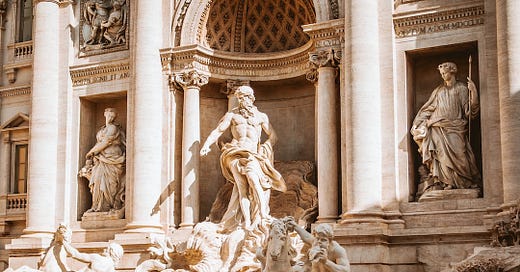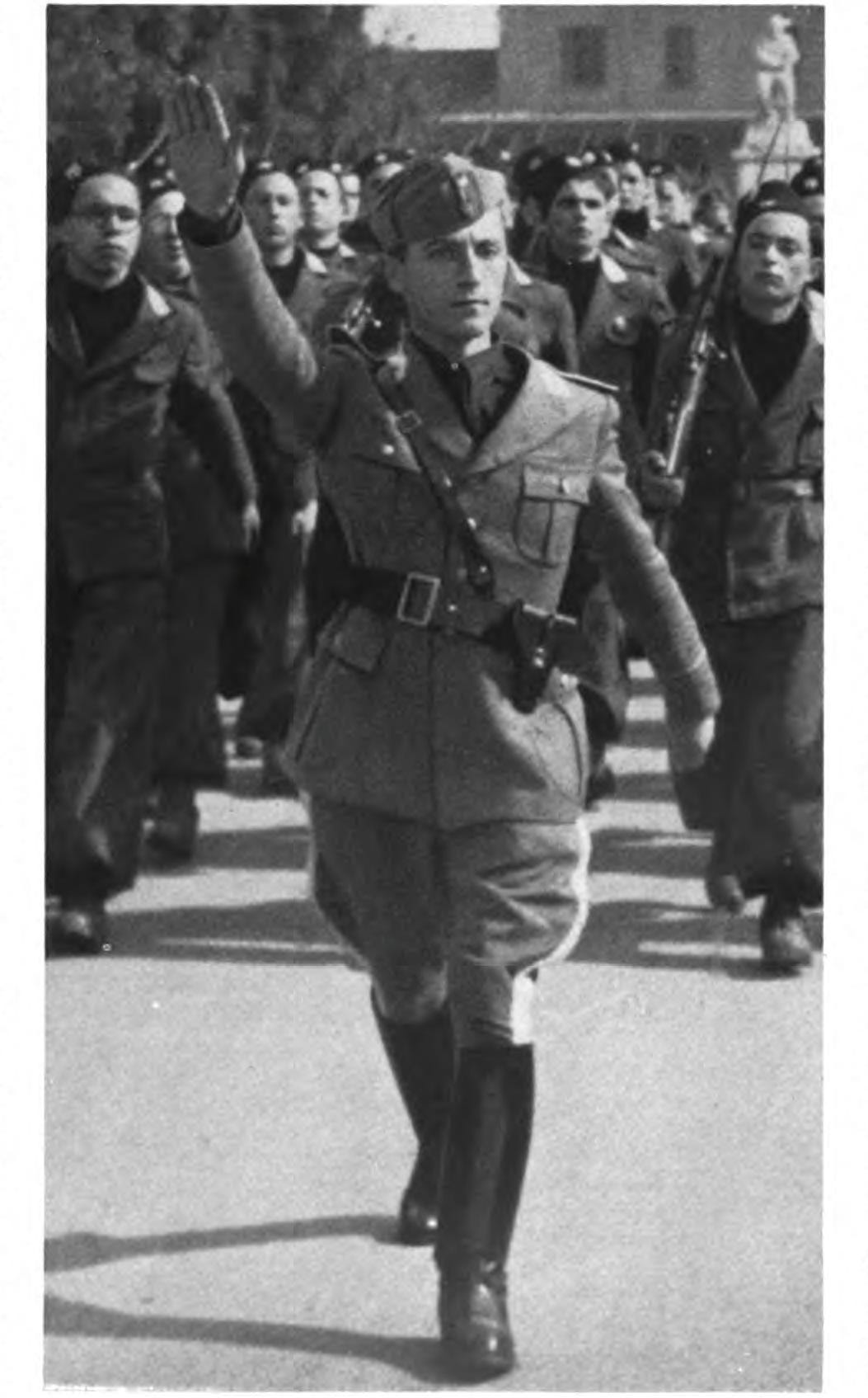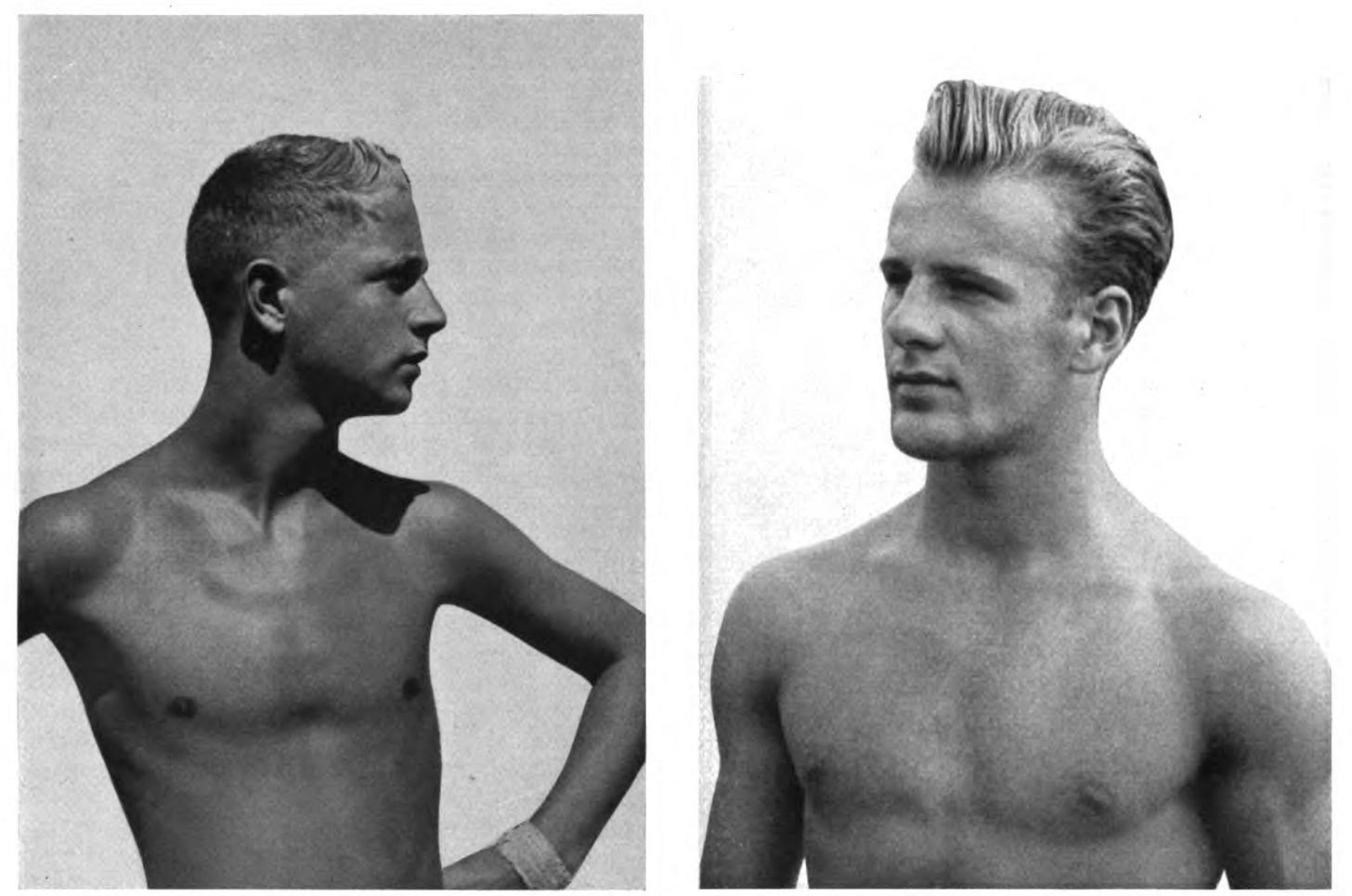Volk und Rasse: Nordic Figures in Italy
About the publication: Volk und Rasse (1925 – 1945) was a monthly magazine published by the J. F. Lehmanns Verlag in Munich. It contained articles on various topics related to race, and was intended for an educated audience.
About the author: Giulio Cogni (January 10, 1908 – November 15, 1983) was an Italian writer, racial theorist, music composer and music critic.
About the translation: The original German-language text was manually transcribed and translated by the author of this blog. See footnotes for details about its provenance.1
Nordic figures in Italy
Dr. Giulio Cogni, Siena
Although one speaks scientifically of a Nordic race, one must not forget that there are many Nordic varieties in the different peoples, depending on the different soul configurations of the nations. And this not only because of the different mixtures of peoples in Europe, but also because of the special character that each people possesses.
It has often been mentioned that there is a Nordic breed with Italian characteristics. The ancient Romans of true Italian origin were known to be of the Nordic race. But there is a distinctly Roman form which, for example, allows the Roman bust to be distinguished from the Greek figures at a glance. The soft and solemn nature of the divine figures of Greece is essentially different from the rough and angular racial characteristics of the Romans. So, like a Greek type, there is also a special Roman type with Nordic traits.
However, if one asks whether the Italians of the Nordic race of today possess the same traits of the ancient Romans, one cannot quite confirm this, although genuinely Roman traits can often reappear. But if one believes that the Italians of today are mainly southerners, in the sense of a complete disorientation of the masses and a complete loss of the Roman type, one must counter that the general characteristics of the Italian people at their best have remained those of ancient Rome (as a tour of the halls and at the same time a view of the visitors of the newly opened Mostra Augustea della Rom anità in Rome shows), although the manner of expression and many other things now often deviate from the same.
It is out of place to revisit the various burning issues of the Roman decline and the resurgence of the Italian Middle Ages. To be sure, the later Romans were all too often degenerate people; the Germanic immigrations certainly brought new Nordic elements with them. It must not be forgotten, however, that the Roman manner was not entirely lost, and that the Italians in every respect always possessed the same general traits of ancient Rome. I think the proportions may have changed, but the species as such has remained the same.
As the English and the North Americans closely resemble the Germans, though their physical features almost always attest to a softening of sharp features which has been better preserved in the German country - somewhat like their linguistic Latinization - so the Italians of today are very often almost like refined Romans.
Such softening is natural throughout history. The urban so-called civilization, the deviation from life close to nature has caused this. If one wants to see good Roman traits of the genuinely Roman-Republican kind today, one must go to the country and seek them out among the healthy farming people. It is noteworthy that the peasants are still very often blond and light-eyed and generally have an ancient character. We shall leave the solution of such a question to personal conjecture. On the contrary, for example the Nordic character of the Florentine figures is world-famous, and everyone knows how different the Florentine attitude is from the Roman one.
With few variants, however, the Florentine Nordic beauty is the general species of the Italian Nordic type. It is characteristic of the Italian people of Nordic character that they are never purely Nordic, but decidedly Nordic-Mediterranean. You cannot find a purely Nordic family, either among the nobility or among the people. Today's good Italian blood has always come from a Nordic-Mediterranean mixture or from keeping the second component pure. This roughly explains the nature of the Italians, predominantly of the Nordic race.
The Nordic race is not, however, a rare phenomenon in Italy, popping up here and there by chance, as has too often been claimed in the North. The Italians with Nordic features could be estimated at about 50% of the total population. Blondness is ubiquitous in childhood in the northern half of Italy, and adults often have light shades of hair and sometimes a distinctly blonde hair color.
There is actually a beauty of Northern Italy with a Nordic element, which corresponds more to that of Central Europe (Eastern, mostly in Veneto and in Piedmont) with very light eyes and hair, not infrequently with frequent freckles and round faces, which is at its best in the slim, tall, so-called Lombard beauty - but she is not only to be found in Lombardy -, and a Central Italian Nordic beauty, the so-called Florentine - with a narrow face, delicate, but strongly built, and nowadays even stronger than the Lombard one, with light eyes, blond or dark blond hair, smaller, more in keeping with the usual Italian historical type — which is fairly widespread throughout, but most common in central Italy.
In our work The Values of the Italian Lineage, we have described the mental character of the Italian people in their Nordic-Mediterranean nature. But such a description is more a matter of art than scientific analysis. The actual soul of a people is its pulsating blood, which, in order to be understood, first requires immersion in its living depths. We can therefore only offer here in brief a weak description.
The destiny of Italian blood lies precisely in the two components of its ancient origins and its recent history, which is also the history of the northern and southern migrations of Europe. Accordingly, the specific type of its great and best cultures has always been a Nordic-Mediterranean one. The two elements are inseparable in the Italian people.
The Italo-Northern attitude is therefore livelier and more southern than the North European. The Nordic figures of Italy often resemble the genuine Nordic or Nordic-Western human species of England and Scandinavia. The same narrow face, the same simple clarity of appearance, and the same slender physique belong to the two strata. They lack, mainly in central Italy, the strong Eastern character. In Italy they are milder and more intimate than the purely Mediterranean ones. They carry within themselves the attitude of Nordic origin, the peculiarity of the best ancient Romans, as well as of the Nordic peoples of the world in general, perhaps less instinctively than the other Italians, they have a grace, a very special distinction.
It may well be said that everywhere in Italy the ruling strata, like the nation's greatest men, almost without exception possessed a drop of this blood. Lively and simple, clear and good-natured like all Italians, the Italians of the Nordic type are not as hasty, violent and impulsive as the others. Honest and noble are the two, Mediterranean and Nordic, if they are purebred, but different. The mildness is a special characteristic of the northerners and because of this outstanding and yet healthy and strong beauty, the blond female types of the Italians are very popular and sought after. As is well known, artists have always had a special predilection for blonde women and Madonnas. But one should not forget in the estimation of our people that even the dark types, as everywhere in Northern Europe, not infrequently have essentially Nordic traits. No less valuable are the noble, mature human figures, filled with pronounced ambition and simple kindness, which make up the large number of the Italian population of northern and central Italy. They do not lack the imperious dignity, however, softened by a special Italian suppleness. This Italian manner possesses a clear and frank diction, cheerful amiability, but which, mainly in central and southern Italy, has nothing to do with the French fierce amiability.
Owing to this Nordic-Mediterranean mixture of the Italians, which is by and large comparatively the same as that of the classical Greek figures, the Italian soul possesses a kind of communion with the spirit of the ancient Hellenes.
The images we have provided are typical enough to give a clear insight into the nature of Italian blood of Nordic or Nordic-Mediterranean origin. These men belong to the Volk. They are blood of our blood, grown from our soil, taken up in their youth, before the destructive power of fashion or life had asserted itself. The German reader, who has no personal knowledge of the Italians of the predominantly Nordic race, can probably get a clearer idea from this.
The figures of our great men of the Nordic race, known throughout the world, and the figures of Italian painting give an accurate idea of the noble bearing of such types at any age.
Unfortunately, what we have covered here is only a ray of sunshine from our light-filled nature, and we hardly dared to really describe what lives in this ray of sunshine. You cannot get an idea of the lively nature of our people if you do not look at their lives for yourself and experience the multiple influences of these Mediterranean people. Basically, the Mediterranean character is essential to them. When we have spoken of the Nordic species in these short lines, we have wanted to describe a special trait of our people, and how this Nordic species merges with the Mediterranean race. We also wanted to show a little how this long-known close relationship with the peoples of northern Europe is to be understood in relation to Italy. For it remains undisputed that the Nordic component was and remains an essential feature of our Volk, especially from Rome onwards.
The original German-language document was accessed via the HathiTrust Digital Library. It is in the Public Domain in the United States, and the digital images of the original text were produced by Google, Inc. There are no copyright restrictions on use of text transcribed or translated from the digital images of the original document.








